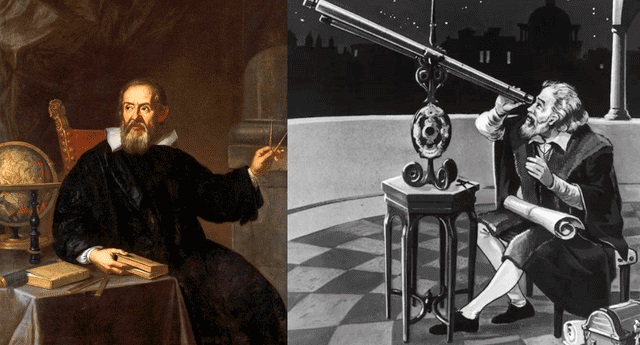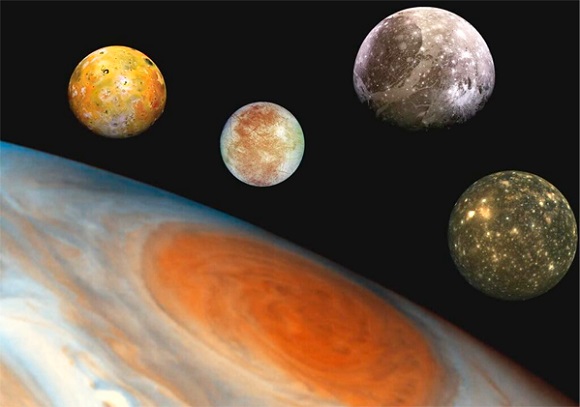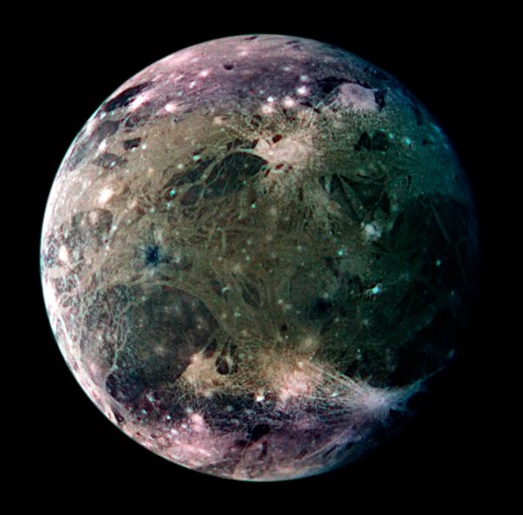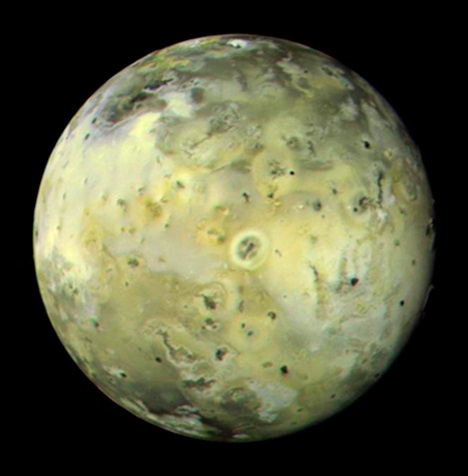Share
The Galilean Moons of Jupiter
Probably the most significant contribution that Galileo Galilei made to Science was the discovery of the four satellites that orbit Jupiter that currently receive this name in his honor.
Galileo's discovery
Galileo first observed Jupiter's moons on January 7, 1610 through a homemade telescope. At first he thought that they were three stars close to Jupiter, which formed a line that crossed the planet.

The next night, these stars seemed to have moved in the wrong direction, which caught his attention. Galileo continued observing these stars and Jupiter over the next week.
On January 11, a fourth star appeared (which would later turn out to be Ganymede). After a week, Galileo had observed that the four stars never left the vicinity of Jupiter and seemed to move with the planet, changing their position relative to each other and to Jupiter.
Finally, Galileo determined that what he had been observing were not stars, but planetary bodies orbiting Jupiter. This discovery confirmed the validity of Copernicus' heliocentric system and proved that all things do not revolve around the Earth.

For most of the three and a half centuries following Galileo's discovery, the four bright satellites attracted little attention among astronomers.
However, since the 1960s, as planetary scientists became interested in planets with a large number of satellites, the entire retinue of natural satellites came under close scrutiny. Naturally, attention focused on the Galilean satellites.
Jupiter's four large satellites are practically planet sized spheres, and observatios made with ground based telescopes and with the spacecraft Pioneer 10 and Pioneer 11 reveal them as being unique and fascinating places: worlds in their own right, yet worlds strinkly different from mercury, mars and the moon, bodies of similar size in the inner solar system.
| N° | Moon | Diameter (km) | Jupiter's distance (km) | Orbital period (days) | Density (g/cm3) |
|---|---|---|---|---|---|
| 1 | Ganymede | 5300 | 1 070 000 | 7,2 | 1,94 |
| 2 | Callisto | 4800 | 1 883 000 | 16,7 | 1,83 |
| 3 | Io | 3600 | 422 000 | 1,8 | 3,52 |
| 4 | Europa | 3100 | 671 000 | 3,5 | 3,01 |
1. Ganymede
Ganymede (Jupiter III), the third Galilean moon is named after the mythological Ganymede, cupbearer of the Greek gods and Zeus's beloved. Ganymede is the largest natural satellite in the Solar System.
It is also the ninth largest celestial body in the solar system. Ganymede could have been considered a planet, as it is even larger than Mercury. However, it was called a satellite, since it describes an orbit around a planet.
Ganymede has a low density meaning that even though it is bigger than Mercury it only has half its mass. Ganymede's low mass is as a result of water ice making around half its composition.

Ganymede is composed primarily of silicate rock and water ice, and a salt-water ocean is believed to exist nearly 200 km below Ganymede's surface, which could contain more water than all of Earth's oceans combined.
Spacecraft images of Ganymede show its surface is a mix of two types of terrain. Forty percent of the surface is covered by highly cratered dark regions, and the remaining sixty percent is covered by regions with a large array of grooves and ridges.
It is the only satellite in the Solar System known to possess a magnetosphere, likely created through convection within the liquid iron core. Ganymede is the only moon known to have its own magnetic field.
2. Callisto
Callisto is Jupiter's second largest satellite and the third largest in the solar system. Callisto was the daughter of the Arcadian king Lykaon and hunting companion of the goddess Artemis.
Callisto is located quite far from Jupiter, that's why it does not form part of the orbital resonance that affects three inner Galilean satellites and thus does not experience appreciable tidal heating.
Callisto is composed of approximately equal amounts of rock and ice, making it the least dense of the Galilean moons. There are no mountains or volcanoes here, only craters. It is one of the most heavily cratered satellites in the Solar System.

The Galileo spacecraft revealed that craters smaller than 10 km (6 miles) are hidden by drifts of fine, dark material resembling a mixture of clay minerals, suggesting that landslides have happened throughout its history, and probably occur even today.
Callisto is surrounded by an extremely thin atmosphere composed of carbon dioxide and probably molecular oxygen. Investigation revealed that Callisto may possibly have a subsurface ocean of liquid water at depths greater than 100 kilometers. The likely presence of an ocean within Callisto indicates that it can or could harbor life.
Callisto seems not to be a suitable place to establish a human colony (its temperatures are infernally low). However, it has many advantages that are not present in the rest of the Galilean satellites.
Callisto gets less radiation than the Earth does (which is seven times less than radiation on Earth) since it is furthest from Jupiter. In addition, it would have geological stability (there would be no need to worry about volcanoes or earthquakes), so it would be a good place to function as a way station.
3. Io
It takes approximately 1.7 Earth days to complete one orbit around Jupiter. It was named after Io, a priestess of Hera who became one of the lovers of Zeus.
Unlike most satellites in the outer Solar System (which have a thick coating of ice), Io is primarily composed of silicate rock surrounding a molten iron or iron sulfide core.

It has the highest density among all satellites, since it is composed of rock; and, proportionally, the smallest amount of water among all known objects in the solar system.
With over 400 active volcanos, Io is the most volcanically active body in the solar system. As Io travels in its slightly elliptical orbit, Jupiter's immense gravity causes tides in Io's solid surface 100 meters (300 feet) high, generating enough heat to give rise to the volcanic activity and drive off most water.
Its surface is covered by sulfur and lava in many colorful forms. It has more than 100 mountains, some of which are taller than Earth's Mount Everest. And the temperature on its surface is estimated to reach 1,200°C.
4. Europa
Europa is the sixth largest satellite in the solar system, in addition to being the sixth moon of the planet Jupiter. Also, it is the smallest of the "Galilean satellites." Her name comes from a character in Greek mythology: Europa was the mother of King Minos of Crete, one of the numerous lovers of the king of the gods.
There are few craters on Europa because its surface is tectonically active and young. The icy crust is believed to cover a global water ocean, between 80 and 150 kilometers deep. Europa is thought to have twice as much liquid water as Earth.

This moon intrigues astrobiologists because of its potential for having a habitable ocean very much like Earth’s. Life forms have been found thriving near underwater volcanoes and in other extreme locations on Earth that are possible analogs to what may exist at Europa.
Europa's appearance is that of an icy ball with lines marked on the satellite's surface. These are probably fractures in the crust that have refilled with water and frozen over. Some theories suggest that Jupiter's gravity is causing these marks, since one side of Europa is constantly facing Jupiter.
The reddish-brown color of the markings is theorized to be caused by sulfur, but scientists cannot confirm this because no data collection devices have been sent to Europe.
🥇 Find out more:
✅ Galileo Galilei's contribution to Science
✅ How big is our moon? How far is our Moon?
✅ Geocentric and Heliocentric models of the universe

